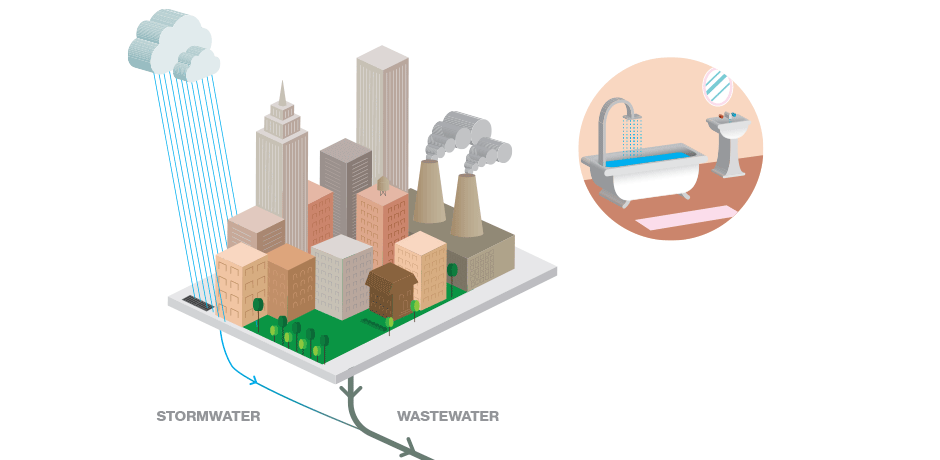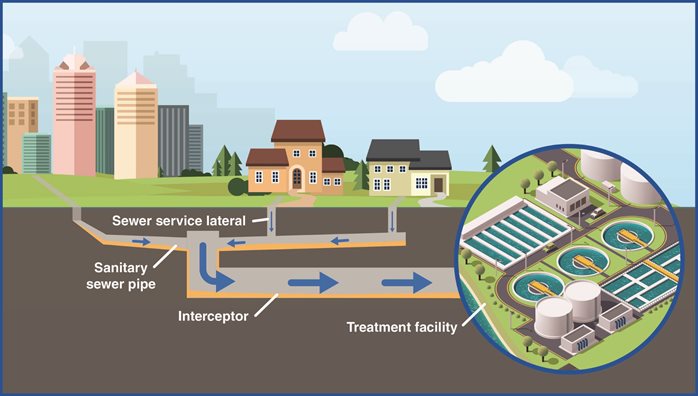Discovering the Function of Biotechnology in Waste Water Treatment
Discovering the Function of Biotechnology in Waste Water Treatment
Blog Article
Optimizing Drainage Therapy Procedures: Techniques for Improved Water High Quality and Resource Healing
In the world of wastewater therapy, the mission for improving effectiveness and sustainability through process optimization is a continuous quest that holds tremendous relevance. By focusing in on methods tailored to elevate water high quality while all at once harnessing important resources, therapy plants can address pushing ecological worries while opening economic benefits. From sophisticated technologies to innovative resource recuperation approaches, the landscape of wastewater therapy is advancing swiftly. As we look into the complexities of enhancing these processes, a world of opportunities arises that promises not only cleaner water yet likewise a much more lasting future.
Value of Refine Optimization
Optimizing drainage therapy procedures with thorough process optimization is crucial for optimizing performance and guaranteeing ecological sustainability. By fine-tuning each action of the therapy procedure, from first intake to last discharge, water therapy centers can attain higher degrees of impurity elimination, minimize power usage, and reduce the generation of waste spin-offs. Process optimization includes evaluating key efficiency indications, such as hydraulic retention times, sludge retention times, and nutrient levels, to identify locations for renovation and carry out targeted remedies.
Reliable procedure optimization not only enhances the general performance of waste water treatment plants yet also adds to cost financial savings and regulatory conformity. By maximizing processes, operators can accomplish higher treatment capabilities without the demand for significant infrastructure investments. Additionally, boosted therapy efficiency causes cleaner effluent discharge, lowering the ecological influence on getting water bodies and communities.

Advanced Treatment Technologies
In the realm of waste water therapy, the execution of sophisticated treatment innovations plays an essential role in improving the total effectiveness and performance of the treatment processes. These advanced innovations use innovative services to address complicated impurities existing in wastewater streams, ensuring the removal of contaminants to satisfy rigorous water quality criteria. Advanced treatment procedures such as membrane bioreactors, ozonation, progressed oxidation processes, and reverse osmosis enable the thorough elimination of impurities, consisting of arising pollutants like pharmaceuticals and personal care items.
In addition, these innovations assist in resource recuperation by extracting useful materials such as phosphorus, nitrogen, and power from the wastewater. For instance, progressed nutrient elimination innovations can recuperate phosphorus and nitrogen for reuse in agricultural plant foods, while energy healing systems like anaerobic food digestion can harness biogas for electrical power generation. By incorporating advanced treatment innovations right into wastewater therapy plants, drivers can improve water quality, minimize ecological influence, and relocate in the direction of a much more resource-efficient and lasting method to wastewater management.
Resource Healing Strategies
Source recuperation techniques in wastewater treatment procedures play an essential function in maximizing the usage of useful resources had within wastewater streams. One common resource recovery strategy is the removal of nutrients like phosphorus and nitrogen from wastewater for reuse as plant foods or in industrial processes.
Water recuperation methods, such as membrane modern technologies and progressed purification systems, make it possible for the treatment and reuse of water for non-potable applications like watering or commercial procedures. By executing resource healing techniques in wastewater treatment plants, not just can valuable resources be preserved and recycled, however the general sustainability and efficiency of the therapy process can be considerably boosted. As the focus on resource shortage and ecological sustainability remains to expand, the importance of integrating resource recuperation methods right into wastewater therapy processes becomes progressively noticeable.
Lasting Practices in Wastewater Therapy
Sustainable techniques in wastewater therapy encompass a range of strategies intended at reducing the environmental influence of treatment processes while taking full advantage of resource healing. One vital facet of sustainable wastewater therapy is the execution of energy-efficient technologies to decrease the carbon footprint of therapy plants.
Additionally, the adoption of innovative treatment modern technologies that promote water reuse and recycling plays a vital role in lasting wastewater administration. By treating wastewater to a high criterion, it can be repurposed for numerous non-potable applications, such as irrigation, industrial procedures, and even safe and clean water production in some instances. This not just conserves beneficial freshwater sources yet also minimizes the quantity of effluent discharged right into the setting.

Instance Research Studies on Successful Optimization
As wastewater treatment centers significantly focus on sustainable practices, real-world study showcasing successful optimization methods act as invaluable designs for market advancement. One such browse around here instance research study revolves around the application of innovative nutrient elimination innovations in a local wastewater treatment plant. By incorporating biological nutrient elimination processes and optimizing operational specifications, the center attained considerable reductions in nitrogen and phosphorus degrees released into getting waters, eventually improving overall water quality.
One more significant study entails the combination of anaerobic food digestion systems in an industrial wastewater treatment plant to boost power recuperation and source performance (Waste Water Treatment). With the digestion of natural waste materials, the center not just created biogas for power manufacturing however also lowered the volume of sludge needing disposal. This dual advantage not just enhanced the plant's sustainability performance however additionally caused expense financial savings
These successful optimization techniques show the possibility for wastewater therapy facilities to accomplish both economic and ecological advantages via reliable processes and innovative approaches. By gaining from these study, sector experts can even more maximize their own operations to boost water high quality and resource healing.
Conclusion
In final thought, enhancing drainage treatment processes via innovative modern technologies, resource healing strategies, and sustainable techniques is essential for improving water high quality and taking full advantage of resource recuperation. Waste Water Treatment. Situation research studies have actually demonstrated effective application of optimization methods in various wastewater therapy facilities. By proceeding to prioritize procedure optimization, we can ensure effective and efficient therapy of wastewater, ultimately leading to an extra sustainable and ecologically pleasant method to managing water resources
By fine-tuning each step of the therapy procedure, from preliminary consumption to last discharge, water treatment centers can accomplish greater levels of contaminant removal, decrease energy intake, and minimize the generation of waste by-products.In the realm of waste water therapy, the application of innovative therapy modern technologies plays a critical role in enhancing the overall performance and efficiency of the treatment processes. By incorporating innovative therapy innovations right into wastewater treatment plants, drivers can improve water top quality, reduce ecological influence, and relocate towards a much more lasting and resource-efficient strategy to wastewater monitoring.
By carrying out resource recovery strategies in wastewater therapy plants, not only can valuable resources be preserved and reused, however the general sustainability and efficiency of the treatment process can be significantly boosted. Lasting practices in wastewater therapy incorporate a variety of methods intended at decreasing the ecological influence of therapy procedures content while making best click this use of source recuperation.
Report this page